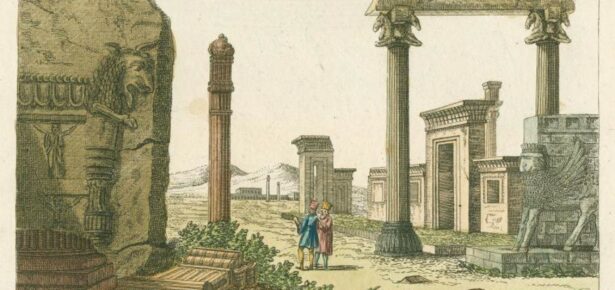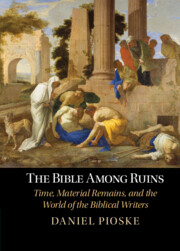
Contemporary research into the biblical writings has been shaped by a number of influences and interpretive methods over the past century. But one of the most significant developments has been the birth of archaeological research and its impact on how we read the Bible. Indeed, what separates our scholarship from those who came before is our access to a substantial influx of archaeological data from excavations in the eastern Mediterranean region and Middle East. It was only in the late 19th century CE when excavations began to be carried out in any systematic way at locations found in these territories, and it was well into the 20th century when archaeological pursuits became guided by considerations and practices that still inform our research today.
What has been unearthed over the decades are a host of insights into how life transpired within the places and times in which the Bible was written. The ruins left behind from these ancient communities have shed light on the homes they lived in, the food they ate, and the beliefs that framed how they thought about society, governance, religion, and aesthetics, among other cultural practices and forms. These insights, in turn, have illuminated the stories and poems the biblical writers composed, offering information about the world these ancient writers inhabited and, as a consequence, further clarifying the references they make to that world in their texts.
But what has also come to light through this research is that the biblical writers themselves lived in a world that was already ancient. We now know that the individuals behind the biblical writings occupied landscapes littered with the material remains of communities who had lived two thousand years previously, from the ruins of large cities to specific artifacts that attested to ways of life the biblical writers would not have recognized as their own. Ruins were so pervasive, in fact, that the biblical writings refer to them in almost every book found in this corpus.
Yet in contrast to our practices of excavation, there is no mention made in the Bible of any individual unearthing ruins to learn about those who lived before. My book, The Bible Among Ruins, asks why. Why, that is, are there no references in the Bible to digging among the ruins its writers describe? Why, among texts that otherwise exhibit such a fascination with the past, is there not more curiosity about what ruins might disclose about former times?
This book addresses these questions by turning to current discussions on the experience of time by historians, theorists, and philosophers. A key argument that one finds within this stream of scholarship is that the experience of time is itself historical, an experience that is contingent, this is to say, on where and when these experiences of time unfold. How we experience time today, on this view, is something distinct from how time was experienced by more ancient communities or those less influenced by our modern assumptions about temporality.
What this scholarship suggests is that a significant—and unexplored—reason for why the biblical writers, among others in antiquity, did not study ruins for insights into the past is that they experienced the “time” of ruins differently. For us, ruins are dense with history, their remains providing information about past worlds whose ways of life were distinct from our own. But for the biblical writers, ruins are conceived of differently. In this book, I draw out three modes of experience pertaining to the time of ruination expressed in these ancient texts: those wed to ruins and memory, ruins and a sense of presence, and, lastly, anticipations of more ruin to come. The overarching experience of ruins expressed in these ancient writings, I contend, is one in which past experiences preserved in material form bear directly on current ones, connecting how life once was and how it was to be lived now.
Image Information: “Ruins of Persepolis, drawn in early 1800s.”
Source note: From Il costume antico e moderno, o, storia del governo, della milizia, della religione, delle arti, scienze ed usanze di tutti i popoli antichi e moderni. (Firenze : Batelli, 1823-1838) Ferrario, Giulio (1767-1847), Author.
The Miriam and Ira D. Wallach Division of Art, Prints and Photographs: Picture Collection, The New York Public Library. “Porte, finestre, mura ec. del palazzo di Persepoli” The New York Public Library Digital Collections. 1823 – 1838. https://digitalcollections.nypl.org/items/510d47e4-12d4-a3d9-e040-e00a18064a99

The Bible Among Ruins
by Daniel Pioske
Latest Comments
Have your say!